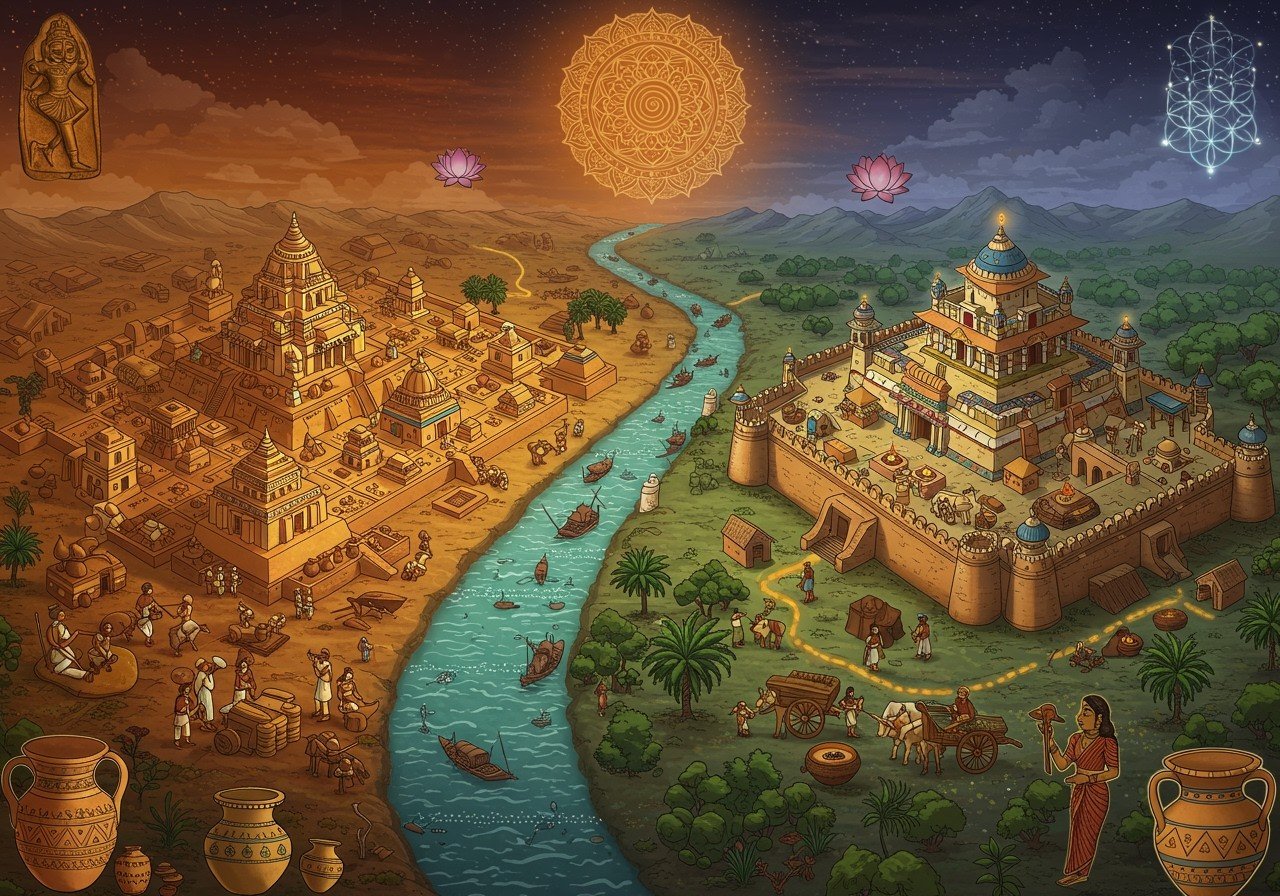
The Indus Valley Civilization, a cradle of ancient urban development, flourished thousands of years ago. Among its many remarkable sites, Rakhigarhi and Banawali, both nestled in Haryana, India, hold particular significance. Delving into their historical importance and archaeological treasures unveils a deeper understanding of this fascinating civilization.
Historical Significance of Rakhigarhi
Located in Hisar District, approximately 150 km northwest of Delhi in the Ghaggar River plain, Rakhigarhi stands as one of the largest Harappan sites in India. Discovered and excavated by the Archaeological Survey of India (ASI), it reveals sophisticated urban planning, a hallmark of the Indus Valley Civilization. The city boasted well-laid streets, intricate drainage systems, and advanced water management techniques, demonstrating remarkable engineering prowess for its time.
Significant artifacts unearthed at Rakhigarhi include:
- Pottery: Various pottery styles and designs offer insights into daily life and artistic expression.
- Tools: A range of tools, from farming implements to crafting instruments, sheds light on the technological advancements of the era.
- Seals: Intricately carved seals, often used for trade and administration, provide glimpses into the civilization’s economic and social structures. Some seals even bear inscriptions, a testament to their early writing system.
The diverse range of housing structures discovered at Rakhigarhi points to social stratification within the community. Burial sites offer valuable insights into the ritualistic practices of the Indus Valley people, while skeletal remains reveal a diverse genetic pool, suggesting a vibrant and cosmopolitan society.
Historical Significance of Banawali
Situated in Fatehabad district, on the left banks of the dried Sarasvati River, about 120 km northeast of Kalibangan, Banawali provides a unique perspective on ancient urban life. Excavations have revealed the layout of streets and buildings, showcasing an impressive level of architectural planning. Key artifacts discovered at Banawali include:
- Terracotta Figurines: These figurines offer glimpses into the artistic sensibilities and possibly religious beliefs of the inhabitants.
- Beads: A variety of beads, crafted from different materials, suggest a thriving craft industry and perhaps even trade networks.
- Pottery: Like Rakhigarhi, Banawali’s pottery provides valuable insights into daily life and artistic traditions. The styles and designs often differ, suggesting regional variations within the Indus Valley Civilization.
Evidence of agriculture, such as granaries and farming tools, highlights the importance of agriculture in their society. A fortified structure suggests the presence of defensive measures, indicating potential conflicts or the need for protection. Weights and measures hint at a structured system of trade and commerce, while the discovery of pottery and metallurgical artifacts points towards specialized craft production.
Rakhigarhi and Banawali on the Map
Both Rakhigarhi and Banawali are situated in Haryana, India. Their proximity to each other and to other significant Indus Valley sites suggests strategic locations for trade and resource distribution. Nearby river systems, like the Ghaggar and the dried Sarasvati, played a crucial role in their development. Connectivity through ancient trade routes underscores their importance in the larger network of the Indus Valley Civilization.
Connections between Rakhigarhi and Banawali
Archaeological evidence points towards cultural and economic links between these two cities. Similarities in urban planning and architectural styles are evident. Common artifacts suggest shared cultural practices, while trade evidence, including shared pottery designs and craft techniques, indicates interaction and exchange between the two settlements. Genetic studies further suggest population movement and intermarriage, strengthening the ties between these communities.
Archaeological Discoveries and Their Impact
The major findings at both Rakhigarhi and Banawali have significantly enriched our understanding of the Indus Valley Civilization. The advanced urban planning features, intricate artifacts, and burial sites provide a window into the daily lives, beliefs, and societal structures of this ancient civilization. Modern technology, such as satellite imagery, continues to aid in uncovering and preserving these archaeological treasures.
Poojn.in: Connecting You to India’s Rich Cultural Heritage
Poojn.in, India’s leading online store for cultural goods and services, offers a wide array of products that connect you to the rich traditions of ancient India. Just as Rakhigarhi and Banawali reveal the intricate rituals and beliefs of the Indus Valley people, poojn.in provides access to authentic puja items, handcrafted deities, and sacred texts, allowing you to experience and preserve these traditions in your own life. Explore our collection today and discover the heritage that binds us together. Visit www.poojn.in.
Explore authentic puja items inspired by ancient traditions at Poojn.in.
Discover handcrafted deities and sacred texts at Poojn.in.
Experience the rich heritage of India with Poojn.in.


